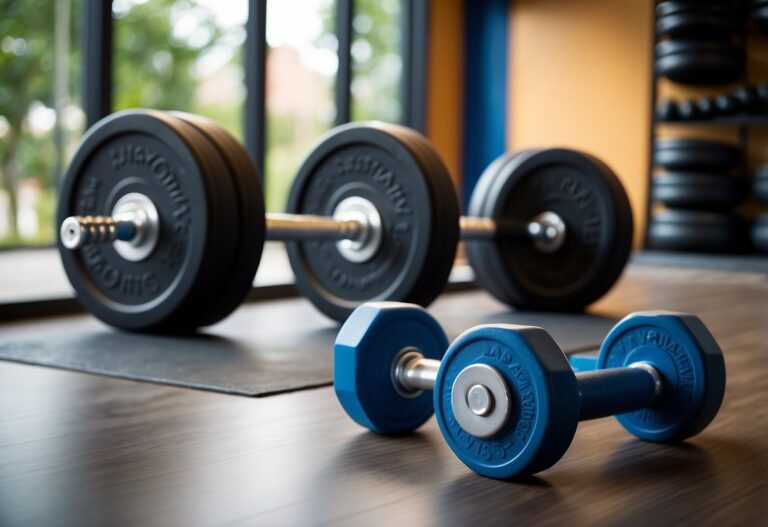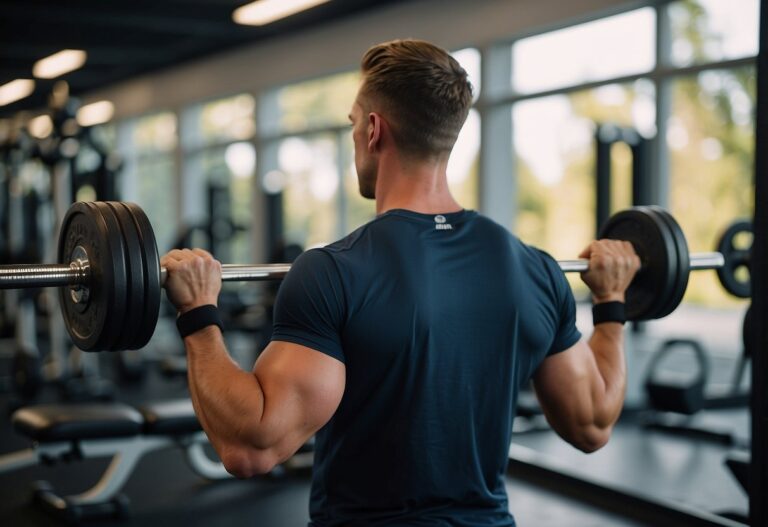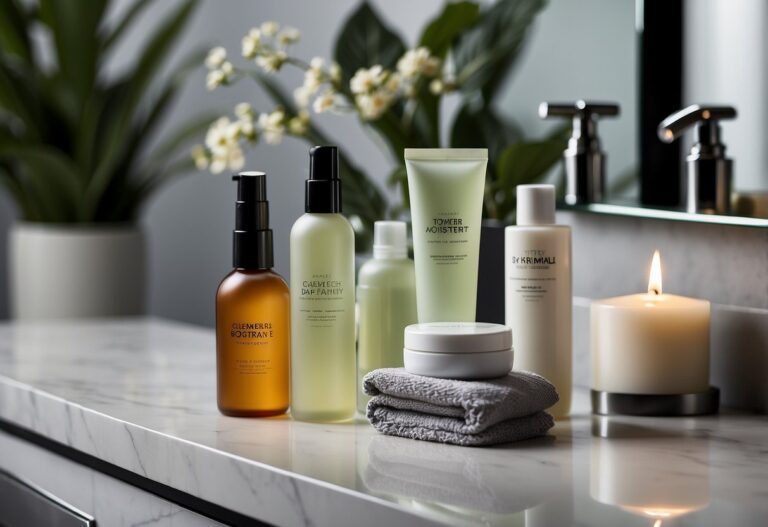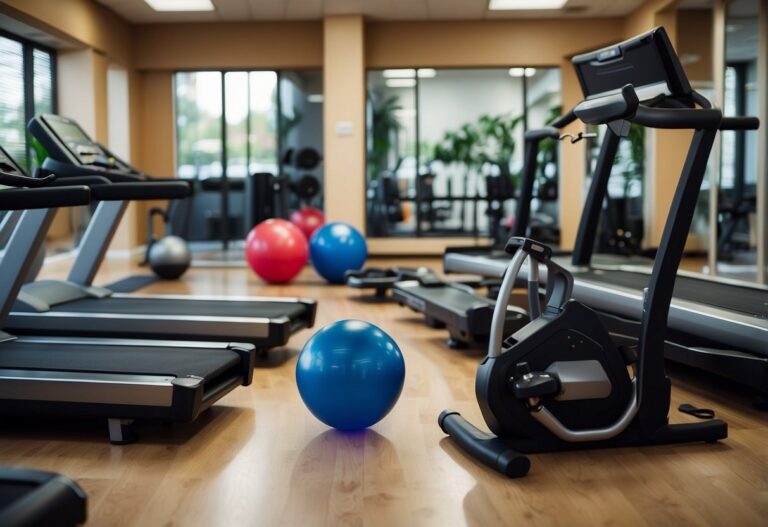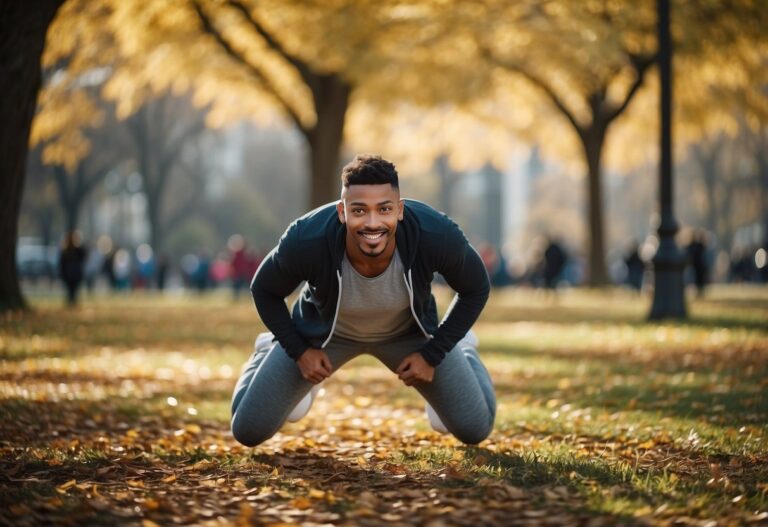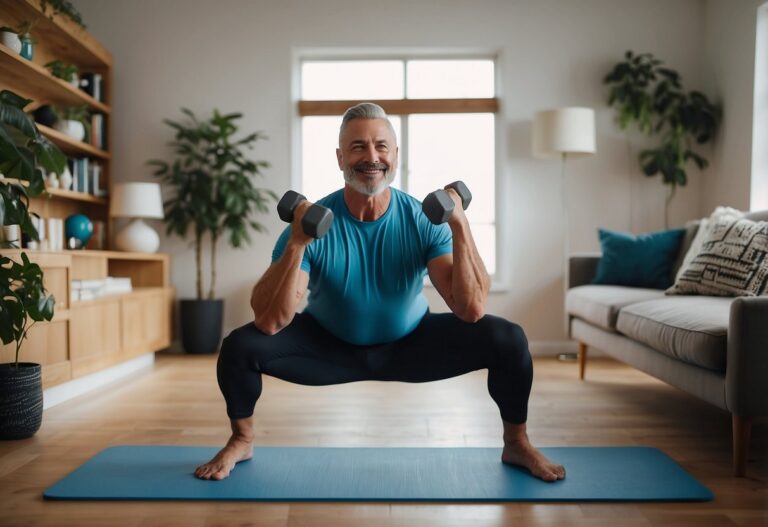Finding the best ways to stay fit at home can be challenging, especially for women looking for effective workouts that don’t require a lot of time or equipment. With so many fitness options available, it can be overwhelming to choose the right exercises that fit into your daily routine and keep you motivated.
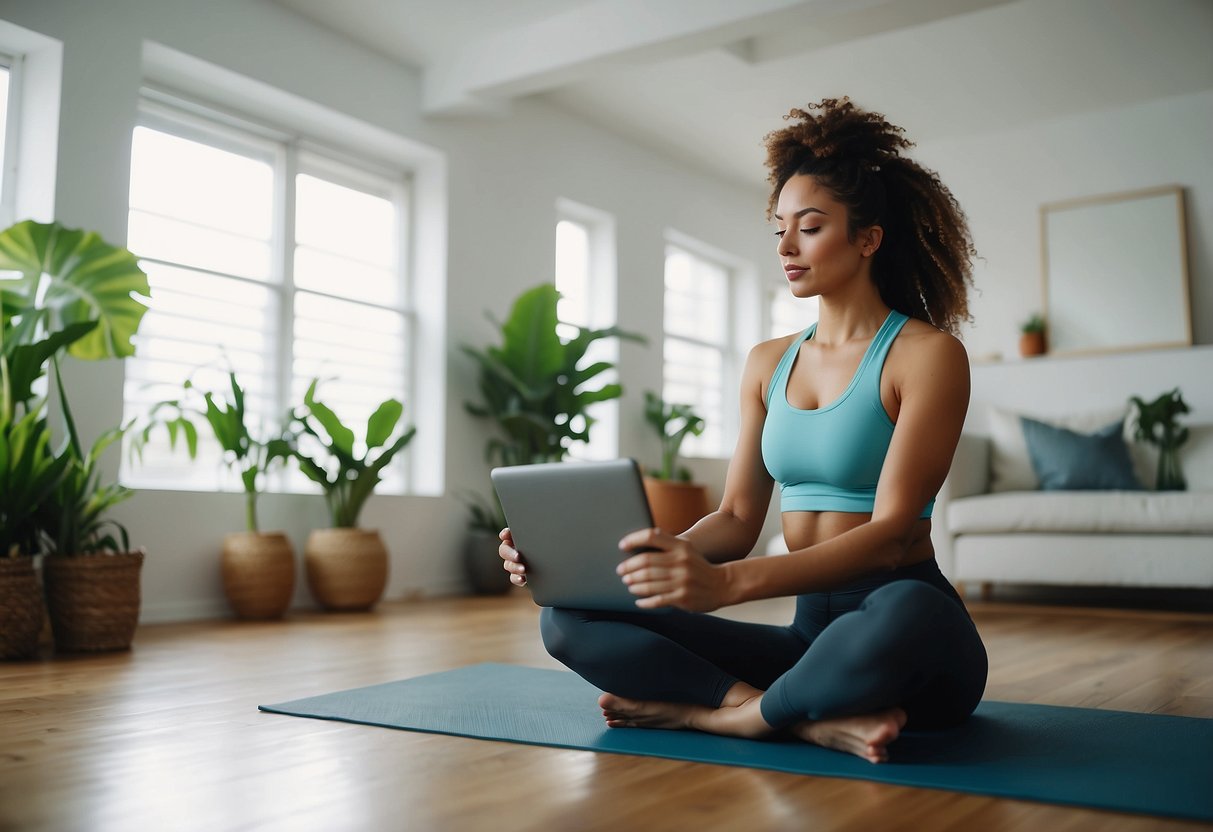
What are the most effective home workout tips for women? This article will guide you through some of the best strategies and practices to help you achieve your fitness goals from the comfort of your home. Whether you’re a beginner or looking to switch up your routine, these insights will help you stay on track and make the most of your workout time.
Resistance Band Exercises
Resistance bands are a fantastic tool for home workouts. They’re affordable, portable, and versatile. Here are some exercises you can try with resistance bands to target different muscle groups.
Squats with Resistance Bands: Stand on the band with feet shoulder-width apart. Hold the band with both hands at shoulder height, and squat down while keeping your chest up. Return to the standing position.
Single Arm Pull-Apart: Hold a resistance band at shoulder height. Pull one arm out to the side while keeping the other arm steady. This move targets your shoulders and upper back.
Glute Bridge with Bands: Place the band around your thighs, lie on your back with knees bent. Lift your hips off the ground, squeezing your glutes. Lower back down slowly.
Resistance band workouts are great for building strength and improving flexibility. They’re perfect for any fitness level. For more detailed routines, check out this band workout guide and this full-body workout.
Start incorporating these exercises into your routine and notice the benefits!
Yoga Poses for Strength
Incorporating yoga into your home workout can greatly enhance your strength. Here are a few effective yoga poses you might want to try.
Plank Pose works wonders for your core, arms, and legs. It’s simple yet challenging. Hold it for 30 seconds to a minute, and you’ll feel the burn.
Warrior II is fantastic for building lower body strength. This pose helps open up your hips and focuses on your thighs and calves. It also improves endurance and balance.
Side Plank Pose can build strong arms and shoulders. It’s great for core stability too. Try holding this pose for 20-30 seconds on each side.
Practising these poses regularly will help you gain strength without needing heavy weights. Wouldn’t it be great to see the improvements in your muscle tone and balance?
HIIT Workouts
HIIT workouts are a fantastic way to get fit at home. They involve short bursts of intense activity followed by brief rest periods. One great thing about HIIT is that it’s effective even if you only have a few minutes to spare.
You can do exercises like burpees, jump squats, and mountain climbers in a HIIT routine. For example, try doing 20 seconds of high knees, followed by a 10-second rest. Repeat for 10 minutes.
For a quick but effective routine, check out these 5-minute HIIT workouts for women that fit into any busy schedule.
Pilates Core Workouts
Pilates is a fantastic way to strengthen your core. One great exercise to start with is the plank. This move works your abdominals, shoulders, and back. Simply hold your body in a straight line from head to heels and engage your core.
Another effective move is the bicycle crunch. Lie on your back, hands behind your head, and alternate bringing each knee towards your chest while lifting your shoulder blades off the ground. This targets your entire core.
For something different, try swimming. Lie on your stomach, lift your limbs off the floor, and flutter them as if you are swimming. This engages your core and lower back muscles.
You can find more detailed descriptions and other exercises on websites like Self and Women’s Health. These resources provide step-by-step instructions to ensure you’re performing each movement correctly.
Dumbbell Workouts
Dumbbells are versatile and perfect for home workouts. You don’t need a lot of space or equipment. With just a couple of dumbbells, you can do a full-body workout.
Dumbbell Romanian Deadlifts: Stand with your feet hip-width apart, holding a dumbbell in each hand. Lower the weights by bending at the hips, keeping your back straight. This move strengthens your hamstrings and lower back.
Walking Lunges: Grab a pair of dumbbells and hold them by your sides. Step forward into a lunge, alternating legs as you move across the room. Lunges work your quads, hamstrings, and glutes.
For a balanced routine, incorporate a mix of upper body and lower body exercises. Combine moves like dumbbell shoulder presses, bicep curls, and tricep extensions. These exercises boost your upper body strength and tone your arms.
Use a mirror or ask a friend to check your form. Proper technique is key to preventing injuries. If you feel discomfort, adjust your position or lighten the weight.
Bodyweight Circuits
Bodyweight circuits are a great way to get a full-body workout without needing any equipment. You can do these at home, which makes them super convenient.
One effective circuit could include exercises like bodyweight squats, push-ups, and planks. You can mix and match these to keep things interesting.
For example, you might start with 20 squats, then move on to 15 push-ups, and finish with a 30-second plank. Repeat this circuit a few times for a good workout. If you’re looking for a more structured plan, check out this Bodyweight Workout for Beginners from Nerd Fitness.
A longer circuit, like a 30-minute one, can also help you burn more calories and improve your fitness. Exercises such as walking lunges and jumping jacks are great to include. You can find a detailed example in this circuit workout by The Fitness Phantom.
Kettlebell Swings
Kettlebell swings are a fantastic exercise for building strength and burning calories. Stand with your feet a bit wider than shoulder-width apart. Hold the kettlebell with both hands in front of you.
Keep your back straight. Bend your knees slightly and hinge at your hips. Swing the kettlebell back between your legs.
Drive your hips forward to swing the kettlebell up to shoulder height. Your lower body and core should do most of the work, not your arms.
This exercise targets your core, glutes, and shoulders. With consistency, you’ll notice better balance and muscle tone. For more details, check out Women’s Health. Engage your core and stay safe!
Cardio Dance Classes
Cardio dance classes are a great way to stay fit while having fun. These classes combine full-body workouts with rhythmic dance moves. You’ll find your heart rate up and muscles engaged without even realising it.
At-home options are plentiful. For example, you can follow along with a 10-minute dance workout that doesn’t require equipment, making it easy to get started right in your living room.
Another excellent option is this 30-minute dance cardio class. It’s designed for beginners, so you can follow along regardless of your skill level. This class blends fun with fitness, ensuring you enjoy every minute.
If you prefer something shorter, a 14-minute TikTok Dance Party Workout offers a quick and energetic session to popular tracks, making the workout seem more like a dance party.
Don’t forget to check out this 20-minute workout with a dance expert. This class focuses on fun and groove, providing an enjoyable way to get your cardio exercise.
Trying different classes can keep your routine fresh and exciting. Plus, you’ll be able to pick up new dance moves while getting a solid workout. Grab some water, clear some space, and get dancing!
Tabata Training
Tabata training is a form of high-intensity interval training (HIIT) that can be done at home without any equipment. It’s great because you only need 20 minutes to get a full-body workout.
You perform exercises in short, intense bursts. For example, you do as many reps as possible of a move like plank jacks for 20 seconds, then rest for 10 seconds. Repeat this cycle for eight rounds.
Common Tabata exercises include squats, burpees, and mountain climbers. You can check out different Tabata exercises designed by trainers to keep your routine fresh and exciting.
It’s all about pushing your limits during those 20 seconds of effort. It’s tough, but worth it. You can also find a 24-minute full-body Tabata HIIT workout to sweat it out at home.
Give it a try and see how your fitness improves.
Balanced Nutrition Advice

For your home workouts to be effective, what you eat is just as important as the exercises you perform.
Start with a balanced diet that includes a mix of carbs, proteins, and fats. Carbohydrates from whole grains, fruits, and vegetables provide essential energy for high-intensity and long-duration workouts. Eating a variety of carbohydrates is key to optimising sports performance.
Protein is crucial for muscle repair and growth. Aim to include lean proteins like chicken, fish, and plant-based options. Consider incorporating protein-rich snacks like a Pulsin Cookie Dough Protein Bar or a Kind Protein Dark Chocolate Nut Snack Bar to keep you fuelled throughout the day.
Adding healthy fats such as avocados, nuts, and olive oil can help support your overall energy needs and keep you feeling full longer. Remember, a well-rounded diet will help you get the most out of your workouts!
Benefits of Home Workouts for Women
Home workouts offer many advantages, especially for women with busy schedules or those who prefer exercising in a private setting. They are great for personalising fitness plans and saving money and time.
Convenience and Flexibility
One of the best things about working out at home is the convenience. You don’t have to waste time commuting to a gym. You can fit workouts into your schedule, whether it’s early in the morning or late at night.
At home, you can choose your own environment to exercise in, comfortably set to your favourite temperature, and with your preferred music. This can make working out more enjoyable and easier to stick to.
Additionally, home workouts give you the flexibility to choose what types of exercises you want to focus on each day. Whether you’re in the mood for squats or yoga, the options are endless.
Cost-Effectiveness
Home workouts are also cost-effective. You don’t need to pay for a gym membership, which can save you money in the long run. While some initial investment in equipment like dumbbells might be necessary, this will be a worthwhile and long-lasting investment.
You can also use everyday household items as substitutes. For example, holding a large bottle of detergent can add resistance to your squats. These simple DIY solutions can help you maintain your fitness routine without breaking the bank.
Moreover, many high-quality workout plans are available online for free or at a low cost. This allows you to access professional-level guidance without spending a fortune.
Customisable Fitness Plans
Creating a customisable fitness plan to suit your personal needs is one of the major benefits of working out at home. You have the freedom to focus on the areas you want to improve, whether it be strength, flexibility, or cardio.
You can also adjust the intensity of your workouts to match your fitness level. If you’re new to exercise, start with basic moves like sit-ups, leg raises, and planks to target your core muscles. As you get fitter, you can incorporate more challenging exercises or increase your workout duration.
Having a customised plan means you can set both short-term and long-term goals, making it easier to track your progress and stay motivated. This personal approach helps ensure that your workouts remain engaging and effective.
Essential Equipment for Home Workouts

Having the right equipment can make a huge difference in your home workout routine. Let’s take a look at some must-have items that can help you get the most out of your workouts.
Resistance Bands
Resistance bands are versatile and affordable. They come in various resistance levels, allowing you to control the intensity of your exercises. You can use them for strength training, stretching, and even mobility work. They’re great for improving muscle tone and can be easily stored away when not in use.
You might find resistance bands particularly useful if you’re short on space or travel frequently. Plus, they’re gentle on the joints, making them ideal for rehabilitation exercises.
Dumbbells and Kettlebells
Dumbbells and kettlebells are essential for building strength. Dumbbells come in different weights, so you can choose the right one for your fitness level. They are great for a variety of exercises, from bicep curls to lunges. Kettlebells, with their unique shape, can be used for dynamic movements like swings and snatches, which help build both strength and endurance.
Start with a lighter weight and gradually increase as you get stronger. Investing in a set with adjustable weights could be a good idea if you want to save space and money.
Yoga Mats
A good yoga mat is a home workout staple. It provides a cushioned, non-slip surface for various exercises, including yoga, Pilates, and stretching. A mat can help protect your joints, especially when performing floor exercises. It also defines your workout space, making it easier to stay focused.
Look for a mat that is durable and easy to clean. Thicker mats provide more cushioning but might be bulkier to store.
By incorporating these essential pieces of equipment into your home workout routine, you can enhance your exercise experience and make your workouts more effective. Whether you’re new to exercising at home or a seasoned pro, having the right tools can help you stay motivated and achieve your fitness goals.
Creating an Effective Home Workout Routine
Crafting a successful home workout routine involves setting clear goals, balancing different exercises, and tracking your progress to ensure continual improvement.
Setting Achievable Goals
When you start working out, it’s important to have clear and realistic goals. Whether you want to lose weight, build strength, or improve flexibility, having specific targets will help keep you motivated.
Start by setting short-term goals, like exercising three times a week. Then, add long-term goals, such as running a 5K or lifting a certain weight. Try not to put too much pressure on yourself. Your goals should be challenging but attainable.
Break these goals into smaller, more manageable tasks. For example, if your goal is to do 20 push-ups, start with five and gradually increase the number each week. This approach makes your goals feel more doable and less overwhelming.
Balancing Different Types of Exercises
A well-rounded workout routine should include a mix of strength training, cardio, and flexibility exercises. Each type of exercise offers unique benefits and helps prevent boredom.
Strength training: This builds muscle and boosts metabolism. You don’t need heavy weights. Bodyweight exercises like squats, push-ups, and lunges are effective. If you have resistance bands or dumbbells, include them in your routine.
Cardio: These exercises improve heart health and burn calories. Activities like running, jumping jacks, or even dancing can serve this purpose. Aim for at least 150 minutes of moderate cardio each week.
Flexibility: Stretching exercises improve mobility and reduce injury risk. Incorporate stretching or yoga into your routine. Hold each stretch for about 30 seconds and feel the gentle pull, not pain.
Balancing these types of exercises ensures you develop strength, cardiovascular health, and flexibility, maintaining overall fitness.
Tracking Progress
Tracking your progress is crucial for staying motivated and seeing how far you’ve come. Keep a workout journal or use a fitness app to log your exercises, sets, reps, and weights.
Review your progress each week to see improvements. Did you do more squats than last time? Can you hold a plank longer? Celebrating these small victories keeps you motivated.
Setting milestones is also helpful. For example, aim to increase your run by half a mile every two weeks. When you see progress, it encourages you to keep pushing forward.
Regularly evaluating and adjusting your routine based on your progress ensures you continue to challenge yourself and avoid plateaus.


